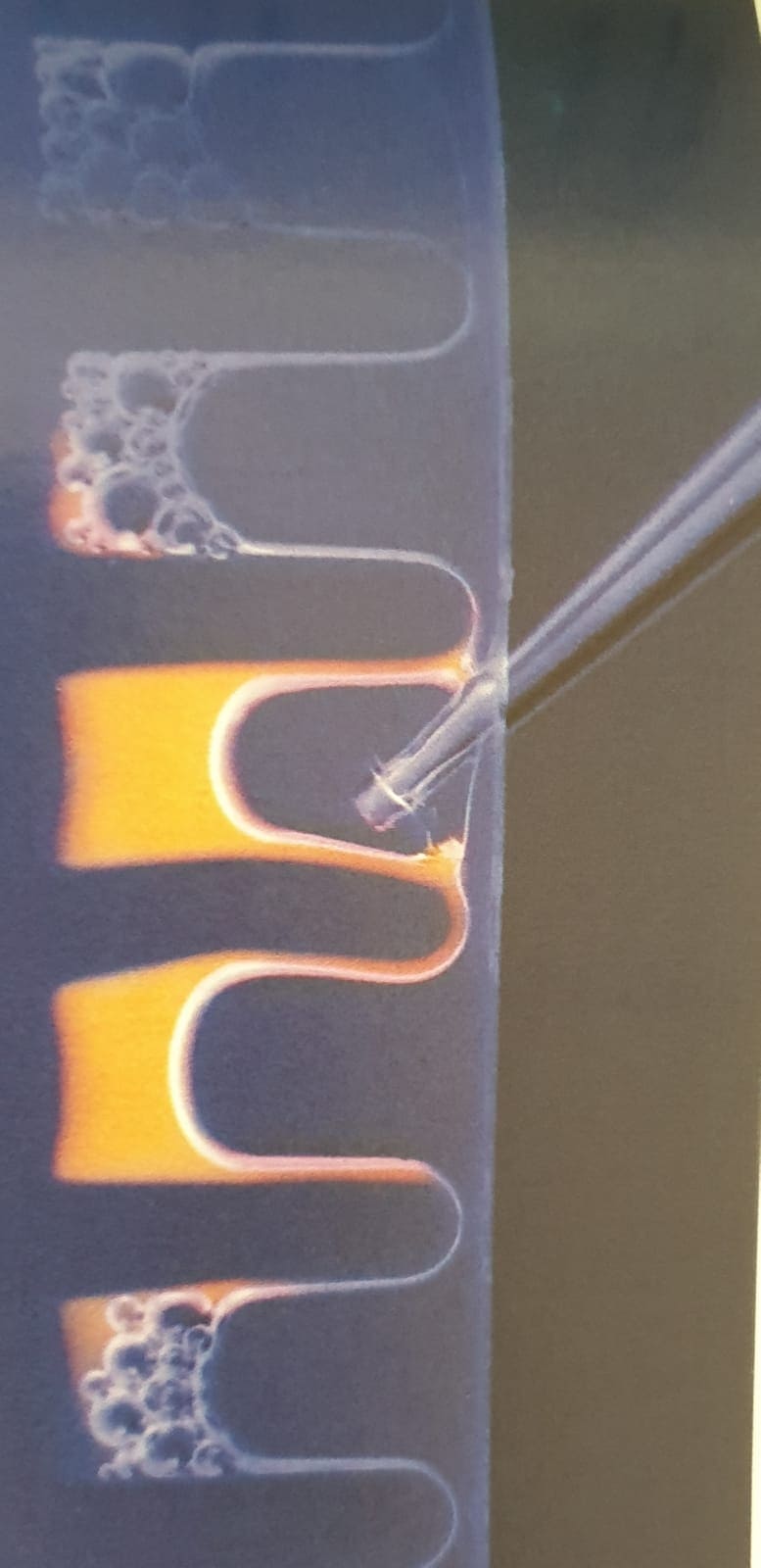27 sierpnia, 2020
Equine Influenza Virus-Neutralising Antibody Responses Induced by Vaccination and Infection
Evaluation of a Pseudotyped Virus Neutralisation Test for the Measurement of Equine Influenza Virus-Neutralising Antibody Responses Induced by Vaccination and Infection
Equine influenza is a major respiratory disease of horses that is largely controlled by vaccination in some equine populations. Virus-neutralising antibodies, the mainstay of the protective immune response, are problematic in assaying for equine influenza virus, as most strains do not replicate efficiently in cell culture. Surrogate measures of protective antibody responses include the haemagglutination inhibition (HI) test and single radial haemolysis (SRH) assay.
- For this study, a pseudotyped virus, bearing an envelope containing the haemagglutinin (HA) from the Florida clade 2 equine influenza virus strain A/equine/Richmond/1/07 (H3N8), was generated to measure HA-specific neutralising antibodies in serum samples (n = 134) from vaccinated or experimentally-infected ponies using a pseudotyped virus neutralization test (PVNT).
- Overall, the results of PVNT were in good agreement with results from the SRH assay (100% sensitivity, 68.53% specificity) and HI test (99.2% sensitivity, 49.03% specificity).
- The PVNT was apparently more sensitive than either the SRH assay or the HI test, which could be advantageous for studying the antibody kinetics, particularly when antibody levels are low.
- Nevertheless, further studies are required to determine whether a protective antibody level can be defined for the SRH assay and to ascertain the inter-laboratory reproducibility.
- In conclusion, the PVNT efficiently measures neutralising antibodies after immunization and/or experimental infection in the natural host, and may complement existing antibody assays.
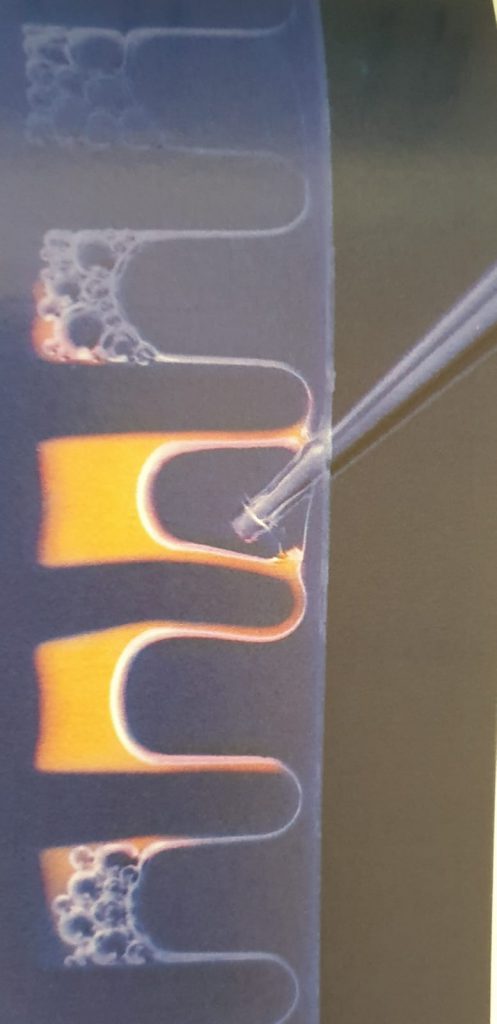
cDNA
 Anti-Human Galectin-1 Antibody |
|||
| 102-P131 | ReliaTech | 100 µg | EUR 245.7 |
|
Description: Galectin-1, also known as L14, BHL and galaptin, is a monomeric or homodimeric prototype galectin that is expressed in a variety of cells and tissues including muscle, heart, liver, prostate, lymph nodes, spleen, thymus, placenta, testis, retina, macrophages, B cells, T cells, dendritic cells, and tumor cells. It preferentially binds laminin, fibronectin, 90K/Mac2BP, CD45, CD43, CD7, CD2, CD3, and ganglioside GM1. Galectin-1 modulates cell growth and proliferation, either positively or negatively, depending on the cell type and activation status. It controls cell survival by inducing apoptosis of activated T cells and immature thymocytes. It modulates cytokine secretion by inducing Th2 type cytokines and inhibiting proinflammatory cytokine production. Galectin1 can also modulate cel-lcell as well as cell-lmatrix interactions and depending on the cell type and developmental stage, promote cell attachment or detachment. Galectin-1 has immunosuppressive and anti-inflammatory properties and has been shown to suppress acute and chronic inflammation and autoimmunity. Human and mouse galectin1 share about 88% amino acid sequence similarity. |
|||
 Anti-Human Galectin-1 Antibody |
|||
| 102-PA131AG | ReliaTech | 50 µg | EUR 157.5 |
|
Description: Galectin-1, also known as L14, BHL and galaptin, is a monomeric or homodimeric prototype galectin that is expressed in a variety of cells and tissues including muscle, heart, liver, prostate, lymph nodes, spleen, thymus, placenta, testis, retina, macrophages, B cells, T cells, dendritic cells, and tumor cells. It preferentially binds laminin, fibronectin, 90K/Mac2BP, CD45, CD43, CD7, CD2, CD3, and ganglioside GM1. Galectin-1 modulates cell growth and proliferation, either positively or negatively, depending on the cell type and activation status. It controls cell survival by inducing apoptosis of activated T cells and immature thymocytes. It modulates cytokine secretion by inducing Th2 type cytokines and inhibiting proinflammatory cytokine production. Galectin1 can also modulate cel-lcell as well as cell-lmatrix interactions and depending on the cell type and developmental stage, promote cell attachment or detachment. Galectin-1 has immunosuppressive and antiinflammatory properties and has been shown to suppress acute and chronic inflammation and autoimmunity. Human and mouse galectin1 share about 88% amino acid sequence similarity. |
|||
 Anti-Human Galectin-1 Antibody |
|||
| 102-PA131S | ReliaTech | 100 µg | EUR 126 |
|
Description: Galectin-1, also known as L14, BHL and galaptin, is a monomeric or homodimeric prototype galectin that is expressed in a variety of cells and tissues including muscle, heart, liver, prostate, lymph nodes, spleen, thymus, placenta, testis, retina, macrophages, B cells, T cells, dendritic cells, and tumor cells. It preferentially binds laminin, fibronectin, 90K/Mac2BP, CD45, CD43, CD7, CD2, CD3, and ganglioside GM1. Galectin-1 modulates cell growth and proliferation, either positively or negatively, depending on the cell type and activation status. It controls cell survival by inducing apoptosis of activated T cells and immature thymocytes. It modulates cytokine secretion by inducing Th2 type cytokines and inhibiting proinflammatory cytokine production. Galectin1 can also modulate cel-lcell as well as cell-lmatrix interactions and depending on the cell type and developmental stage, promote cell attachment or detachment. Galectin-1 has immunosuppressive and antiinflammatory properties and has been shown to suppress acute and chronic inflammation and autoimmunity. Human and mouse galectin1 share about 88% amino acid sequence similarity. |
|||
 Elisa Kit) Human Galectin( Galectin) Elisa Kit |
|||
| EK711568 | AFG Bioscience LLC | 96 Wells | EUR 0.18 |
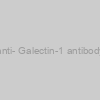 anti- Galectin-1 antibody |
|||
| FNab03314 | FN Test | 100µg | EUR 606.3 |
|
|||
|
Description: Antibody raised against Galectin-1 |
|||
 anti- Galectin-1 antibody |
|||
| FNab03315 | FN Test | 100µg | EUR 658.5 |
|
|||
|
Description: Antibody raised against Galectin-1 |
|||
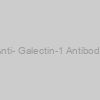 Anti- Galectin-1 Antibody |
|||
| GWB-6F6392 | GenWay Biotech | 0.1 mg | Ask for price |
 Antibody) Human Galectin-1 (Gal-1) Antibody |
|||
| 30005-05111 | AssayPro | 150 ug | EUR 215 |
) Human Galectin-1 (LGALS1) |
|||
| 1-CSB-EP012882HU | Cusabio |
|
|
|
|||
|
Description: Recombinant Human Galectin-1(LGALS1) expressed in E.coli |
|||
) Human Galectin-1 (LGALS1) |
|||
| 1-CSB-EP012882HUb1 | Cusabio |
|
|
|
|||
|
Description: Recombinant Human Galectin-1(LGALS1) expressed in E.coli |
|||
ELISA Kit) Human Galectin-3(Galectin-3)ELISA Kit |
|||
| YLA0216HU-48T | Shanghai YL Biotech | 48T | Ask for price |
ELISA Kit) Human Galectin-3(Galectin-3)ELISA Kit |
|||
| YLA0216HU-96T | Shanghai YL Biotech | 96T | Ask for price |
) human anti-human galectin-3 mAb(2D) |
|||
| E4A09H10-2D | EnoGene | 50ug | EUR 275 |
|
Description: Biotin-Conjugated, FITC-Conjugated , AF350 Conjugated , AF405M-Conjugated ,AF488-Conjugated, AF514-Conjugated ,AF532-Conjugated, AF555-Conjugated ,AF568-Conjugated , HRP-Conjugated, AF405S-Conjugated, AF405L-Conjugated , AF546-Conjugated, AF594-Conjugated , AF610-Conjugated, AF635-Conjugated , AF647-Conjugated , AF680-Conjugated , AF700-Conjugated , AF750-Conjugated , AF790-Conjugated , APC-Conjugated , PE-Conjugated , Cy3-Conjugated , Cy5-Conjugated , Cy5.5-Conjugated , Cy7-Conjugated Antibody |
|||
) human anti-human galectin-3 mAb(5F) |
|||
| E4A09H10-5F | EnoGene | 50ug | EUR 275 |
|
Description: Biotin-Conjugated, FITC-Conjugated , AF350 Conjugated , AF405M-Conjugated ,AF488-Conjugated, AF514-Conjugated ,AF532-Conjugated, AF555-Conjugated ,AF568-Conjugated , HRP-Conjugated, AF405S-Conjugated, AF405L-Conjugated , AF546-Conjugated, AF594-Conjugated , AF610-Conjugated, AF635-Conjugated , AF647-Conjugated , AF680-Conjugated , AF700-Conjugated , AF750-Conjugated , AF790-Conjugated , APC-Conjugated , PE-Conjugated , Cy3-Conjugated , Cy5-Conjugated , Cy5.5-Conjugated , Cy7-Conjugated Antibody |
|||
) human anti-human galectin-3 mAb(A5) |
|||
| E4A09H10-A5 | EnoGene | 50ug | EUR 275 |
|
Description: Biotin-Conjugated, FITC-Conjugated , AF350 Conjugated , AF405M-Conjugated ,AF488-Conjugated, AF514-Conjugated ,AF532-Conjugated, AF555-Conjugated ,AF568-Conjugated , HRP-Conjugated, AF405S-Conjugated, AF405L-Conjugated , AF546-Conjugated, AF594-Conjugated , AF610-Conjugated, AF635-Conjugated , AF647-Conjugated , AF680-Conjugated , AF700-Conjugated , AF750-Conjugated , AF790-Conjugated , APC-Conjugated , PE-Conjugated , Cy3-Conjugated , Cy5-Conjugated , Cy5.5-Conjugated , Cy7-Conjugated Antibody |
|||
) human anti-human galectin-3 mAb(G2) |
|||
| E4A09H10-G2 | EnoGene | 50ug | EUR 275 |
|
Description: Biotin-Conjugated, FITC-Conjugated , AF350 Conjugated , AF405M-Conjugated ,AF488-Conjugated, AF514-Conjugated ,AF532-Conjugated, AF555-Conjugated ,AF568-Conjugated , HRP-Conjugated, AF405S-Conjugated, AF405L-Conjugated , AF546-Conjugated, AF594-Conjugated , AF610-Conjugated, AF635-Conjugated , AF647-Conjugated , AF680-Conjugated , AF700-Conjugated , AF750-Conjugated , AF790-Conjugated , APC-Conjugated , PE-Conjugated , Cy3-Conjugated , Cy5-Conjugated , Cy5.5-Conjugated , Cy7-Conjugated Antibody |
|||
) human anti-human galectin-3 mAb(H3) |
|||
| E4A09H10-H3 | EnoGene | 50ug | EUR 275 |
|
Description: Biotin-Conjugated, FITC-Conjugated , AF350 Conjugated , AF405M-Conjugated ,AF488-Conjugated, AF514-Conjugated ,AF532-Conjugated, AF555-Conjugated ,AF568-Conjugated , HRP-Conjugated, AF405S-Conjugated, AF405L-Conjugated , AF546-Conjugated, AF594-Conjugated , AF610-Conjugated, AF635-Conjugated , AF647-Conjugated , AF680-Conjugated , AF700-Conjugated , AF750-Conjugated , AF790-Conjugated , APC-Conjugated , PE-Conjugated , Cy3-Conjugated , Cy5-Conjugated , Cy5.5-Conjugated , Cy7-Conjugated Antibody |
|||
) human anti-human galectin-3 mAb(T1) |
|||
| E4A09H10-T1 | EnoGene | 50ug | EUR 275 |
|
Description: Biotin-Conjugated, FITC-Conjugated , AF350 Conjugated , AF405M-Conjugated ,AF488-Conjugated, AF514-Conjugated ,AF532-Conjugated, AF555-Conjugated ,AF568-Conjugated , HRP-Conjugated, AF405S-Conjugated, AF405L-Conjugated , AF546-Conjugated, AF594-Conjugated , AF610-Conjugated, AF635-Conjugated , AF647-Conjugated , AF680-Conjugated , AF700-Conjugated , AF750-Conjugated , AF790-Conjugated , APC-Conjugated , PE-Conjugated , Cy3-Conjugated , Cy5-Conjugated , Cy5.5-Conjugated , Cy7-Conjugated Antibody |
|||
) human anti-human galectin-3 mAb(N13) |
|||
| E4A09H10-N13 | EnoGene | 50ug | EUR 275 |
|
Description: Biotin-Conjugated, FITC-Conjugated , AF350 Conjugated , AF405M-Conjugated ,AF488-Conjugated, AF514-Conjugated ,AF532-Conjugated, AF555-Conjugated ,AF568-Conjugated , HRP-Conjugated, AF405S-Conjugated, AF405L-Conjugated , AF546-Conjugated, AF594-Conjugated , AF610-Conjugated, AF635-Conjugated , AF647-Conjugated , AF680-Conjugated , AF700-Conjugated , AF750-Conjugated , AF790-Conjugated , APC-Conjugated , PE-Conjugated , Cy3-Conjugated , Cy5-Conjugated , Cy5.5-Conjugated , Cy7-Conjugated Antibody |
|||
 Anti Human Galectin-3 Polyclonal Antibody |
|||
| KH040 | Sceti | each | EUR 778.8 |
|
Description: The Anti Human Galectin-3 Polyclonal Antibody is available in Europe and for worldwide shipping via Gentaur. |
|||
 Recombinant Human Galectin-1 |
|||
| 7-00427 | CHI Scientific | 10µg | Ask for price |
 Recombinant Human Galectin-1 |
|||
| 7-00428 | CHI Scientific | 50µg | Ask for price |
 Recombinant Human Galectin-1 |
|||
| 7-00429 | CHI Scientific | 1mg | Ask for price |
 Recombinant Human Galectin-1 |
|||
| AP60482 | SAB | 100ug | EUR 449 |
|
|||
 Recombinant Human Galectin-1 |
|||
| HEOPP-0710 | Cyagen | 10ug | Ask for price |
 RECOMBINANT HUMAN GALECTIN-1 |
|||
| GWB-BEA2B0 | GenWay Biotech | 0.05 mg | Ask for price |
 Recombinant Human Galectin-1 |
|||
| cyt-544-10g | ProSpec Tany | 10µg | EUR 60 |
 Recombinant Human Galectin-1 |
|||
| cyt-544-1mg | ProSpec Tany | 1mg | EUR 1350 |
 Recombinant Human Galectin-1 |
|||
| cyt-544-50g | ProSpec Tany | 50µg | EUR 145 |
 Human Galectin 1 Protein |
|||
| 20-abx066725 | Abbexa |
|
|
|
|||
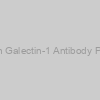 Human Galectin-1 Antibody Pair Set |
|||
| ABPR-ZB244 | Creative Diagnostics | 5 plates, 15 plates | Ask for price |
|
Description: Quantitative determination of Human Galectin-1 |
|||
 Galectin-1, human recombinant |
|||
| 4648-10 | Biovision | each | EUR 170.4 |
 Galectin-1, human recombinant |
|||
| 4648-1000 | Biovision | each | EUR 1977.6 |
 Galectin-1, human recombinant |
|||
| 4648-50 | Biovision | each | EUR 314.4 |
 Galectin-1 Human Recombinant |
|||
| rAP-2252 | Angio Proteomie | Inquiry | Ask for price |
 Human Galectin-1 ELISA Kit |
|||
| EK5323 | SAB | 96 tests | EUR 599 |
|
|||
 Human Galectin-1 ELISA Kit |
|||
| IHULGALS1KT | Innovative research | each | EUR 702 |
|
|||
|
Description: Human Galectin-1 ELISA Kit |
|||
 Mouse Monoclonal anti-human Galectin-1 |
|||
| hAP-1228 | Angio Proteomie | 50ug | EUR 400 |
 Sheep Polyclonal anti-Human Galectin-1 |
|||
| hAP-5905 | Angio Proteomie | 50ug | EUR 400 |
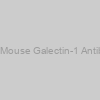 Anti-Mouse Galectin-1 Antibody |
|||
| 103-M223 | ReliaTech | 100 µg | EUR 399 |
|
Description: The galectins constitute a large family of carbohydrate-binding proteins that function in many systems both intracellularly and following secretion. Galectins contain either one or two carbohydrate recognition domains (CRR) which mediate recognition of N-acetyl-lactosamine-containing glycoproteins. Some galectins exist in multiple isoforms due to alternative splicing. Individual galectins differ in their tissue distribution and in their carbohydrate-binding specificities. |
|||
 Protein) Human Galectin-1 (LEG1) Protein |
|||
| abx690252-100g | Abbexa | 100 µg | EUR 837.5 |
 Protein) Human Galectin-1 (LEG1) Protein |
|||
| abx690252-20g | Abbexa | 20 µg | EUR 350 |
 ELISA) Human Galectin 1 (GAL1) ELISA |
|||
| KT-15605 | Kamiya Biomedical Company | 96 tests | EUR 952 |
 Protein) Human Galectin-1 (LGALS1) Protein |
|||
| abx670211-50ug | Abbexa | 50 ug | EUR 661.2 |
|
|||
 Human Galectin 1 ELISA kit |
|||
| E01A4669 | BlueGene | 96T | EUR 700 |
|
Description: ELISA |
|||
 Human Galectin 1 ELISA kit |
|||
| E01G0038-192T | BlueGene | 192 tests | EUR 1524 |
|
|||
|
Description: A sandwich ELISA for quantitative measurement of Human Galectin 1 in samples from blood, plasma, serum, cell culture supernatant and other biological fluids. This is a high quality ELISA kit developped for optimal performance with samples from the particular species. |
|||
 Human Galectin 1 ELISA kit |
|||
| E01G0038-48 | BlueGene | 1 plate of 48 wells | EUR 624 |
|
|||
|
Description: A sandwich ELISA for quantitative measurement of Human Galectin 1 in samples from blood, plasma, serum, cell culture supernatant and other biological fluids. This is a high quality ELISA kit developped for optimal performance with samples from the particular species. |
|||
 Human Galectin 1 ELISA kit |
|||
| E01G0038-96 | BlueGene | 1 plate of 96 wells | EUR 822 |
|
|||
|
Description: A sandwich ELISA for quantitative measurement of Human Galectin 1 in samples from blood, plasma, serum, cell culture supernatant and other biological fluids. This is a high quality ELISA kit developped for optimal performance with samples from the particular species. |
|||
 Human Galectin 1 ELISA Kit |
|||
| IHUGAL1KT | Innovative research | each | EUR 667 |
|
|||
|
Description: Human Galectin 1 ELISA Kit |
|||
 Galectin-10, Human |
|||
| E34M155H | EnoGene | 5 μg | EUR 155 |
 Galectin-12, Human |
|||
| E34M156H | EnoGene | 5 μg | EUR 155 |
 Galectin-13, Human |
|||
| E34M157H | EnoGene | 5 μg | EUR 155 |
 Galectin-14, Human |
|||
| E34M158H | EnoGene | 5 μg | EUR 155 |
 Galectin-16, Human |
|||
| E34M159H | EnoGene | 5 μg | EUR 155 |
 Galectin-2, Human |
|||
| E34M149H | EnoGene | 5 μg | EUR 155 |
 Galectin-3, Human |
|||
| E34M150H | EnoGene | 5 μg | EUR 155 |
 Galectin-4, Human |
|||
| E34M151H | EnoGene | 5 μg | EUR 155 |
 Galectin-7, Human |
|||
| E34M152H | EnoGene | 5 μg | EUR 155 |
 Galectin-8, Human |
|||
| E34M153H | EnoGene | 5 μg | EUR 155 |
 Galectin-9, Human |
|||
| E34M154H | EnoGene | 5 μg | EUR 155 |
 Galectin-3 Human |
|||
| GWB-1FDCC0 | GenWay Biotech | 0.05 mg | Ask for price |
|
|||
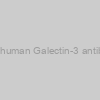 anti-human Galectin-3 antibody |
|||
| 10-2887 | Fitzgerald | 250 ug | EUR 410 |
|
|||
|
Description: Purified anti-human Galectin-3 antibody |
|||
 Anti-Human Galectin-3 Antibody |
|||
| 102-P228 | ReliaTech | 100 µg | EUR 245.7 |
|
Description: The galectins constitute a large family of carbohydrate-binding proteins that function in many systems both intracellularly and following secretion. Galectins contain either one or two carbohydrate recognition domains (CRR) which mediate recognition of N-acetyl-lactosamine-containing glycoproteins. Some galectins exist in multiple isoforms due to alternative splicing. Individual galectins differ in their tissue distribution and in their carbohydrate-binding specificities. |
|||
 Anti-Human Galectin-3 Antibody |
|||
| 101-M424 | ReliaTech | 100 µg | EUR 399 |
|
Description: The galectins constitute a large family of carbohydrate-binding proteins that function in many systems both intracellularly and following secretion. Galectins contain either one or two carbohydrate recognition domains (CRR) which mediate recognition of N-acetyl-lactosamine-containing glycoproteins. Some galectins exist in multiple isoforms due to alternative splicing. Individual galectins differ in their tissue distribution and in their carbohydrate-binding specificities. |
|||
 Anti-Human Galectin-4 Antibody |
|||
| 101-M425 | ReliaTech | 100 µg | EUR 399 |
|
Description: Galectin-4 is a member of the subfamily of galectins composed of two carbohydrate recognition domains having similar peptide chains. The galectins are a family of beta-galactoside-binding proteins having a role in modulating cell-cell and cell-matrix interactions, which inhibits chronic inflammations, GVHD, and allergic responses. LGALS4 expression is limited to small intestine, colon, and rectum, and it is underexpressed in colorectal cancer. LGALS4 binds as an endogenous ligand to glycosphingolipids having 3-O-sulfated Gal residues and bind as well to cholesterol-3-sulfate. LGALS4 takes part in cell adhesion. LGALS4 plays a role in crosslinking the lateral cell membranes of the surface-lining epithelial cells, thus supporting epithelial integrity against mechanical stress exerted by the bowel lume. |
|||
 Anti-Human Galectin-8 Antibody |
|||
| 101-M427 | ReliaTech | 100 µg | EUR 399 |
|
Description: LGALS8 is a prostate-specific antigen that is solely overexpressed in malignant tumors and thus is a supplementary specific identifier of malignancies. LGALS8 is part of the galectin gene family which facilitates both cell-cell and cell matrix interactions in a method parallel to the selectin subgroup of C-type lectins. |
|||
 Anti-Human Galectin-3 Antibody |
|||
| 101-M747 | ReliaTech | 100 µg | EUR 399 |
|
Description: The galectins constitute a large family of carbohydrate-binding proteins that function in many systems both intracellularly and following secretion. Galectins contain either one or two carbohydrate recognition domains (CRR) which mediate recognition of N-acetyl-lactosamine-containing glycoproteins. Some galectins exist in multiple isoforms due to alternative splicing. Individual galectins differ in their tissue distribution and in their carbohydrate-binding specificities. |
|||
 Anti-Human Galectin-7 Antibody |
|||
| 101-M748 | ReliaTech | 100 µg | EUR 399 |
|
Description: Galectin-7 is a protein that in humans is encoded by the LGALS7 gene. The galectins are a family of beta-galactoside-binding proteins implicated in modulating cell–cell and cell–matrix interactions. Differential and in situ hybridizations indicate that this lectin is specifically expressed in keratinocytes. It is expressed at all stages of epidermal differentiation (i.e., in basal and supra-basal layers). It is moderately repressed by retinoic acid. The protein was found mainly in stratified squamous epithelium. The antigen localized to basal keratinocytes, although it was also found, albeit at lower levels, in the supra-basal layers where it concentrated to areas of cell-to-cell contact. The cellular localization and it’s striking down-regulation in cultured keratinocytes imply a role in cell–cell and/or cell–matrix interactions necessary for normal growth control. |
|||
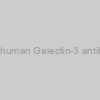 Anti-human Galectin-3 antibody |
|||
| STJ15100163 | St John's Laboratory | 250 µg | EUR 403.2 |
|
Description: This monoclonal antibody is for studies of antigen expression in cells and tissue sections using immunocytochemistry and immunoprecipitation |
|||
) Recombinant Human Galectin-1 (LGALS1) |
|||
| CSB-EP012882HU | Cusabio | 1598 mg | Ask for price |
) Recombinant Human Galectin-1 (LGALS1) |
|||
| CSB-EP012882HUb1 | Cusabio | 1599 mg | Ask for price |
) Recombinant Human Galectin-1(LGALS1) |
|||
| AP70493 | SAB | 1mg | EUR 1978 |
|
|||
) Recombinant Human Galectin-1 (LGALS1) |
|||
| Z101845 | ABM | 15 µg | EUR 105 |
|
Description: Galectin-1 is a member of the galectin family, and binds B-galactosidase moieties on glycoproteins or glycolipids. Galectins are primarily involved in modulation of cell-cell and cell-matrix interactions. Galectin-1 acts as a negative regulator of immunity, promoting immune suppression and lessening the inflammatory response. Galectin-1 binds CD45, CD3 and CD4, resulting in the inhibition of CD45 phosphatase dependant dephosphorylation of lyn kinase, as well as a number of other immune related receptors. Due to its function as a negative regulator of the immune response, and role inducing apoptosis in activated Th1 and Th17 cells, it is commonly found upregulated around malignant tumours. It has also been implicated as having a role in the development of immune tolerance during pregnancy, and is highly expressed at the maternal-fetal interface. As a dimer it down-regulates neutrophils by inducing exposure of phosphatidylserine, thereby marking the cell for apoptosis. It shares approximately 88% and 90% sequence similarity with mouse and rat galectin-1, respectively. Recombinant Human Galectin-1 is a 14.9kDa protein. |
|||
) Recombinant Human Galectin-1 (LGALS1) |
|||
| Z101847 | ABM | 100 µg | EUR 270 |
|
Description: Galectin-1 is a member of the galectin family, and binds B-galactosidase moieties on glycoproteins or glycolipids. Galectins are primarily involved in modulation of cell-cell and cell-matrix interactions. Galectin-1 acts as a negative regulator of immunity, promoting immune suppression and lessening the inflammatory response. Galectin-1 binds CD45, CD3 and CD4, resulting in the inhibition of CD45 phosphatase dependant dephosphorylation of lyn kinase, as well as a number of other immune related receptors. Due to its function as a negative regulator of the immune response, and role inducing apoptosis in activated Th1 and Th17 cells, it is commonly found upregulated around malignant tumours. It has also been implicated as having a role in the development of immune tolerance during pregnancy, and is highly expressed at the maternal-fetal interface. As a dimer it down-regulates neutrophils by inducing exposure of phosphatidylserine, thereby marking the cell for apoptosis. It shares approximately 88% and 90% sequence similarity with mouse and rat galectin-1, respectively. Recombinant Human Galectin-1 is a 14.9kDa protein. |
|||
) Recombinant Human Galectin-1 (LGALS1) |
|||
| Z101849 | ABM | 1.0 mg | EUR 1135 |
|
Description: Galectin-1 is a member of the galectin family, and binds B-galactosidase moieties on glycoproteins or glycolipids. Galectins are primarily involved in modulation of cell-cell and cell-matrix interactions. Galectin-1 acts as a negative regulator of immunity, promoting immune suppression and lessening the inflammatory response. Galectin-1 binds CD45, CD3 and CD4, resulting in the inhibition of CD45 phosphatase dependant dephosphorylation of lyn kinase, as well as a number of other immune related receptors. Due to its function as a negative regulator of the immune response, and role inducing apoptosis in activated Th1 and Th17 cells, it is commonly found upregulated around malignant tumours. It has also been implicated as having a role in the development of immune tolerance during pregnancy, and is highly expressed at the maternal-fetal interface. As a dimer it down-regulates neutrophils by inducing exposure of phosphatidylserine, thereby marking the cell for apoptosis. It shares approximately 88% and 90% sequence similarity with mouse and rat galectin-1, respectively. Recombinant Human Galectin-1 is a 14.9kDa protein. |
|||
 Human Galectin-1 ELISA ELISA Kit |
|||
| E16HE0311 | EnoGene | 96T | EUR 1000 |
 Human Galectin-1 Recombinant Protein |
|||
| 100-175 | ReliaTech | 50 µg | EUR 196.35 |
|
Description: Lectins, of either plant or animal origin, are carbohydrate binding proteins that interact with glycoprotein and glycolipids on the surface of animal cells. The Galectins are lectins that recognize and interact with β-galactoside moieties. Galectin-1 is an animal lectin that has been shown to interact with CD3, CD4, and CD45. It induces apoptosis of activated T-cells and T-leukemia cell lines and inhibits the protein phosphatase activity of CD45. Recombinant human Galectin-1 is a 14.5 kDa protein containing 134 amino acid residues. |
|||
 Human Galectin-1 Recombinant Protein |
|||
| 100-175S | ReliaTech | 10 µg | EUR 92.4 |
|
Description: Lectins, of either plant or animal origin, are carbohydrate binding proteins that interact with glycoprotein and glycolipids on the surface of animal cells. The Galectins are lectins that recognize and interact with β-galactoside moieties. Galectin-1 is an animal lectin that has been shown to interact with CD3, CD4, and CD45. It induces apoptosis of activated T-cells and T-leukemia cell lines and inhibits the protein phosphatase activity of CD45. Recombinant human Galectin-1 is a 14.5 kDa protein containing 134 amino acid residues. |
|||
 Human Galectin-1 Recombinant Protein |
|||
| 400-015 | ReliaTech | 50 µg | EUR 126 |
|
Description: Lectins, of either plant or animal origin, are carbohydrate binding proteins that interact with glycoprotein and glycolipids on the surface of animal cells. The Galectins are lectins that recognize and interact with beta-galactoside moieties. Galectin-1 is an animal lectin that has been shown to interact with CD3, CD4, and CD45. It induces apoptosis of activated T-cells and T-leukemia cell lines and inhibits the protein phosphatase activity of CD45. Recombinant human Galectin-1 is a 14.5 kDa protein containing 134 amino acid residues. |
|||
 Recombinant Human Galectin-1 Protein |
|||
| E40KMP1041 | EnoGene | 20ug | EUR 495 |
Novel Caffeic Acid Phenethyl Ester-Mortalin Antibody Nanoparticles Offer Enhanced Selective Cytotoxicity to Cancer Cells
Caffeic acid phenethyl ester (CAPE) is a key bioactive ingredient of honeybee propolis and is claimed to have anticancer activity. Since mortalin, a hsp70 chaperone, is enriched in a cancerous cell surface, we recruited a unique cell internalizing anti-mortalin antibody (MotAb) to generate mortalin-targeting CAPE nanoparticles (CAPE-MotAb). Biophysical and biomolecular analyses revealed enhanced anticancer activity of CAPE-MotAb both in in vitro and in vivo assays.
We demonstrate that CAPE-MotAb cause a stronger dose-dependent growth arrest/apoptosis of cancer cells through the downregulation of Cyclin D1-CDK4, phospho-Rb, PARP-1, and anti-apoptotic protein Bcl2. Concomitantly, a significant increase in the expression of p53, p21WAF1, and caspase cleavage was obtained only in CAPE-MotAb treated cells.
We also demonstrate that CAPE-MotAb caused a remarkably enhanced downregulation of proteins critically involved in cell migration. In vivo tumor growth assays for subcutaneous xenografts in nude mice also revealed a significantly enhanced suppression of tumor growth in the treated group suggesting that these novel CAPE-MotAb nanoparticles may serve as a potent anticancer nanomedicine.
Evaluation of a Pseudotyped Virus Neutralisation Test for the Measurement of Equine Influenza Virus-Neutralising Antibody Responses Induced by Vaccination and Infection
Equine influenza is a major respiratory disease of horses that is largely controlled by vaccination in some equine populations. Virus-neutralizing antibodies, the mainstay of the protective immune response, are problematic in assaying for equine influenza virus, as most strains do not replicate efficiently in cell culture. Surrogate measures of protective antibody responses include the haemagglutination inhibition (HI) test and single radial haemolysis (SRH) assay.
For this study, a pseudotyped virus, bearing an envelope containing the haemagglutinin (HA) from the Florida clade 2 equine influenza virus strain A/equine/Richmond/1/07 (H3N8), was generated to measure HA-specific neutralising antibodies in serum samples (n = 134) from vaccinated or experimentally-infected ponies using a pseudotyped virus neutralization test (PVNT).
Overall, the results of PVNT were in good agreement with results from the SRH assay (100% sensitivity, 68.53% specificity) and HI test (99.2% sensitivity, 49.03% specificity). The PVNT was apparently more sensitive than either the SRH assay or the HI test, which could be advantageous for studying the antibody kinetics, particularly when antibody levels are low.
Nevertheless, further studies are required to determine whether a protective antibody level can be defined for the SRH assay and to ascertain the inter-laboratory reproducibility. In conclusion, the PVNT efficiently measures neutralising antibodies after immunization and/or experimental infection in the natural host, and may complement existing antibody assays.
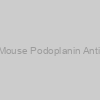 Anti-Mouse Podoplanin Antibody |
|||
| 103-PA40 | ReliaTech | 200 µg | EUR 204.75 |
|
Description: Podoplanin, also known as glycoprotein 38 (gp38), PA2.26 antigen, T1alpha (T1A), and aggrus, is a 38 kDa type I transmembrane sialoglycoprotein and member of the podoplanin family. Podoplanin is synthesized as a 172 amino acid (aa) precursor with a 22 aa signal sequence, a 119 aa extracellular domain (ECD), a 21 aa transmembrane region, and a short, 10 aa cytoplasmic tail. The ECD contains abundant Ser/Thr residues as potential sites for Oglycosylation, and the cytoplasmic region contains putative sites for kinase C and cAMP phosphorylation. Mouse Podoplanin shares 77% and 46% aa sequence identity with rat and human Podoplanin, respectively. Podoplanin is expressed on glomerular epithelial cells (podocytes), type I lung alveolar cells, lymphatic endothelial cells, and on numerous tumors including colorectal tumors, squamous cell carcinomas, testicular seminoma, and brain tumors. One study shows high expression of Podoplanin mRNA in placenta, lung, skeletal muscle, and heart, and weaker levels in brain, kidney, and liver. Podoplanin is the ligand for Ctype lectin like receptor 2 (CLEC2). Their association is dependent on sialic acid on Oglycans of Podoplanin. Podoplanin is also necessary for lymphatic vessel formation, normal lung cell proliferation and alveolus formation at birth. |
|||
 Anti-Mouse Podoplanin Antibody |
|||
| 103-PA40S | ReliaTech | 100 µg | EUR 126 |
|
Description: Podoplanin, also known as glycoprotein 38 (gp38), PA2.26 antigen, T1alpha (T1A), and aggrus, is a 38 kDa type I transmembrane sialoglycoprotein and member of the podoplanin family. Podoplanin is synthesized as a 172 amino acid (aa) precursor with a 22 aa signal sequence, a 119 aa extracellular domain (ECD), a 21 aa transmembrane region, and a short, 10 aa cytoplasmic tail. The ECD contains abundant Ser/Thr residues as potential sites for Oglycosylation, and the cytoplasmic region contains putative sites for kinase C and cAMP phosphorylation. Mouse Podoplanin shares 77% and 46% aa sequence identity with rat and human Podoplanin, respectively. Podoplanin is expressed on glomerular epithelial cells (podocytes), type I lung alveolar cells, lymphatic endothelial cells, and on numerous tumors including colorectal tumors, squamous cell carcinomas, testicular seminoma, and brain tumors. One study shows high expression of Podoplanin mRNA in placenta, lung, skeletal muscle, and heart, and weaker levels in brain, kidney, and liver. Podoplanin is the ligand for Ctype lectin like receptor 2 (CLEC2). Their association is dependent on sialic acid on Oglycans of Podoplanin. Podoplanin is also necessary for lymphatic vessel formation, normal lung cell proliferation and alveolus formation at birth. |
|||
 Mouse Podoplanin ELISA kit |
|||
| E01A24381 | BlueGene | 96T | EUR 700 |
|
Description: ELISA |
|||
 Mouse Podoplanin ELISA kit |
|||
| E03P0082-192T | BlueGene | 192 tests | EUR 1524 |
|
|||
|
Description: A sandwich ELISA for quantitative measurement of Mouse Podoplanin in samples from blood, plasma, serum, cell culture supernatant and other biological fluids. This is a high quality ELISA kit developped for optimal performance with samples from the particular species. |
|||
 Mouse Podoplanin ELISA kit |
|||
| E03P0082-48 | BlueGene | 1 plate of 48 wells | EUR 624 |
|
|||
|
Description: A sandwich ELISA for quantitative measurement of Mouse Podoplanin in samples from blood, plasma, serum, cell culture supernatant and other biological fluids. This is a high quality ELISA kit developped for optimal performance with samples from the particular species. |
|||
 Mouse Podoplanin ELISA kit |
|||
| E03P0082-96 | BlueGene | 1 plate of 96 wells | EUR 822 |
|
|||
|
Description: A sandwich ELISA for quantitative measurement of Mouse Podoplanin in samples from blood, plasma, serum, cell culture supernatant and other biological fluids. This is a high quality ELISA kit developped for optimal performance with samples from the particular species. |
|||
 Mouse Podoplanin ELISA Kit |
|||
| IMSPDPNKT | Innovative research | each | EUR 752 |
|
|||
|
Description: Mouse Podoplanin ELISA Kit |
|||
 anti- Podoplanin antibody |
|||
| FNab06598 | FN Test | 100µg | EUR 702 |
|
|||
|
Description: Antibody raised against Podoplanin |
|||
 anti- Podoplanin antibody |
|||
| FNab06599 | FN Test | 100µg | EUR 702 |
|
|||
|
Description: Antibody raised against Podoplanin |
|||
 Mouse Monoclonal anti-Rat Podoplanin Antibody |
|||
| xAP-0897 | Angio Proteomie | 100ug | EUR 280 |
 Protein) Mouse Podoplanin (PDPN) Protein |
|||
| 20-abx650139 | Abbexa |
|
|
|
|||
 Protein) Mouse Podoplanin (PDPN) Protein |
|||
| abx694266-10nmol | Abbexa | 10 nmol | EUR 700 |
 Protein) Mouse Podoplanin (PDPN) Protein |
|||
| abx694266-5nmol | Abbexa | 5 nmol | EUR 462.5 |
 Protein) Mouse Podoplanin (PDPN) Protein |
|||
| abx650139-100g | Abbexa | 100 µg | EUR 537.5 |
 Protein) Mouse Podoplanin (PDPN) Protein |
|||
| abx650139-10g | Abbexa | 10 µg | EUR 212.5 |
 Protein) Mouse Podoplanin (PDPN) Protein |
|||
| abx650139-50g | Abbexa | 50 µg | EUR 375 |
 Mouse Monoclonal Podoplanin Antibody |
|||
| TA327727 | Origene Technologies GmbH | 1 ml | Ask for price |
 CLIA Kit) Mouse Podoplanin (PDPN) CLIA Kit |
|||
| 20-abx493858 | Abbexa |
|
|
|
|||
 ELISA Kit) Mouse Podoplanin (PDPN) ELISA Kit |
|||
| DLR-PDPN-Mu | DL Develop | 96T | EUR 475 |
|
|||
|
Description: tissue homogenates, cell lysates or other biological fluids. |
|||
 ELISA Kit) Mouse Podoplanin (PDPN) ELISA Kit |
|||
| DLR-PDPN-Mu-48T | DL Develop | 48T | EUR 632.4 |
|
|||
|
Description: A sandwich quantitative ELISA assay kit for detection of Mouse Podoplanin (PDPN) in samples from tissue homogenates, cell lysates or other biological fluids. |
|||
 ELISA Kit) Mouse Podoplanin (PDPN) ELISA Kit |
|||
| DLR-PDPN-Mu-96T | DL Develop | 96T | EUR 825.6 |
|
|||
|
Description: A sandwich quantitative ELISA assay kit for detection of Mouse Podoplanin (PDPN) in samples from tissue homogenates, cell lysates or other biological fluids. |
|||
 ELISA Kit) Mouse Podoplanin (PDPN) ELISA Kit |
|||
| EK8596 | SAB | 96Т | EUR 799 |
|
|||
 Mouse Podoplanin, Pdpn ELISA KIT |
|||
| ELI-06723m | Lifescience Market | 96 Tests | EUR 1038 |
 ELISA Kit) Mouse Podoplanin (PDPN) ELISA Kit |
|||
| EKN47838-48T | Biomatik Corporation | 48T | EUR 389.62 |
 ELISA Kit) Mouse Podoplanin (PDPN) ELISA Kit |
|||
| EKN47838-5x96T | Biomatik Corporation | 5x96T | EUR 2643.85 |
 ELISA Kit) Mouse Podoplanin (PDPN) ELISA Kit |
|||
| EKN47838-96T | Biomatik Corporation | 96T | EUR 556.6 |
 ELISA Kit) Mouse Podoplanin (PDPN) ELISA Kit |
|||
| EKU06727-48T | Biomatik Corporation | 48T | EUR 571.55 |
 ELISA Kit) Mouse Podoplanin (PDPN) ELISA Kit |
|||
| EKU06727-5x96T | Biomatik Corporation | 5x96T | EUR 3878.38 |
 ELISA Kit) Mouse Podoplanin (PDPN) ELISA Kit |
|||
| EKU06727-96T | Biomatik Corporation | 96T | EUR 816.5 |
 ELISA Kit) Mouse Podoplanin (PDPN) ELISA Kit |
|||
| DL-PDPN-Mu | DL Develop | 96T | EUR 453 |
|
|||
|
Description: tissue homogenates, cell lysates or other biological fluids. |
|||
 ELISA Kit) Mouse Podoplanin (PDPN) ELISA Kit |
|||
| abx571749-96tests | Abbexa | 96 tests | EUR 943.2 |
|
|||
 ELISA Kit) Mouse Podoplanin (PDPN) ELISA Kit |
|||
| AE28131MO-48Tests | Abebio | 48 Tests | EUR 325 |
|
|||
|
Description: Mouse (Mus musculus) |
|||
 ELISA Kit) Mouse Podoplanin (PDPN) ELISA Kit |
|||
| AE28131MO-96Tests | Abebio | 96 Tests | EUR 610 |
|
|||
|
Description: Mouse (Mus musculus) |
|||
 ELISA Kit) Mouse Podoplanin (PDPN) ELISA Kit |
|||
| 20-abx154564 | Abbexa |
|
|
|
|||
 ELISA Kit) Mouse Podoplanin (PDPN) ELISA Kit |
|||
| RD-PDPN-Mu-48T | Reddot Biotech | 48T | EUR 464.3 |
|
|||
|
Description: tissue homogenates, cell lysates and other biological fluids. |
|||
 ELISA Kit) Mouse Podoplanin (PDPN) ELISA Kit |
|||
| RD-PDPN-Mu-48Tests | Reddot Biotech | 48 Tests | EUR 639.6 |
 ELISA Kit) Mouse Podoplanin (PDPN) ELISA Kit |
|||
| RD-PDPN-Mu-96T | Reddot Biotech | 96T | EUR 663.3 |
|
|||
|
Description: tissue homogenates, cell lysates and other biological fluids. |
|||
 ELISA Kit) Mouse Podoplanin (PDPN) ELISA Kit |
|||
| RD-PDPN-Mu-96Tests | Reddot Biotech | 96 Tests | EUR 888 |
 ELISA Kit) Mouse Podoplanin (PDPN) ELISA Kit |
|||
| RK13459 | Abclonal | 96T | EUR 280 |
ELISA kit) Mouse Podoplanin(PDPN)ELISA kit |
|||
| QY-E21215 | Qayee Biotechnology | 96T | EUR 433.2 |
 ELISA Kit) Mouse Podoplanin (PDPN) ELISA Kit |
|||
| SEC719Mu-10x96wellstestplate | Cloud-Clone | 10x96-wells test plate | EUR 5834.88 |
|
|||
|
Description: This is Double-antibody Sandwich Enzyme-linked immunosorbent assay for detection of Mouse Podoplanin (PDPN) in tissue homogenates, cell lysates and other biological fluids. |
|||
 ELISA Kit) Mouse Podoplanin (PDPN) ELISA Kit |
|||
| SEC719Mu-1x48wellstestplate | Cloud-Clone | 1x48-wells test plate | EUR 585.7 |
|
|||
|
Description: This is Double-antibody Sandwich Enzyme-linked immunosorbent assay for detection of Mouse Podoplanin (PDPN) in tissue homogenates, cell lysates and other biological fluids. |
|||
 ELISA Kit) Mouse Podoplanin (PDPN) ELISA Kit |
|||
| SEC719Mu-1x96wellstestplate | Cloud-Clone | 1x96-wells test plate | EUR 785.28 |
|
|||
|
Description: This is Double-antibody Sandwich Enzyme-linked immunosorbent assay for detection of Mouse Podoplanin (PDPN) in tissue homogenates, cell lysates and other biological fluids. |
|||
 ELISA Kit) Mouse Podoplanin (PDPN) ELISA Kit |
|||
| SEC719Mu-5x96wellstestplate | Cloud-Clone | 5x96-wells test plate | EUR 3173.76 |
|
|||
|
Description: This is Double-antibody Sandwich Enzyme-linked immunosorbent assay for detection of Mouse Podoplanin (PDPN) in tissue homogenates, cell lysates and other biological fluids. |
|||
 ELISA Kit) Mouse Podoplanin (PDPN) ELISA Kit |
|||
| 4-SEC719Mu | Cloud-Clone |
|
|
|
|||
|
Description: Enzyme-linked immunosorbent assay based on the Double-antibody Sandwich method for detection of Mouse Podoplanin (PDPN) in samples from tissue homogenates, cell lysates and other biological fluids with no significant corss-reactivity with analogues from other species. |
|||
 ELISA Kit) Mouse Podoplanin (PDPN) ELISA Kit |
|||
| RDR-PDPN-Mu-48T | Reddot Biotech | 48T | EUR 487.52 |
|
|||
|
Description: tissue homogenates, cell lysates and other biological fluids. |
|||
 ELISA Kit) Mouse Podoplanin (PDPN) ELISA Kit |
|||
| RDR-PDPN-Mu-48Tests | Reddot Biotech | 48 Tests | EUR 668.4 |
 ELISA Kit) Mouse Podoplanin (PDPN) ELISA Kit |
|||
| RDR-PDPN-Mu-96T | Reddot Biotech | 96T | EUR 696.47 |
|
|||
|
Description: tissue homogenates, cell lysates and other biological fluids. |
|||
 ELISA Kit) Mouse Podoplanin (PDPN) ELISA Kit |
|||
| RDR-PDPN-Mu-96Tests | Reddot Biotech | 96 Tests | EUR 928.8 |
ELISA kit) Mouse Podoplanin (PDPN)ELISA kit |
|||
| YLA0596MO-48T | Shanghai YL Biotech | 48T | Ask for price |
ELISA kit) Mouse Podoplanin (PDPN)ELISA kit |
|||
| YLA0596MO-96T | Shanghai YL Biotech | 96T | Ask for price |
 ELISA Kit) Mouse PDPN(Podoplanin) ELISA Kit |
|||
| ELK7080-48T | ELK Biotech | 48T | Ask for price |
|
|||
|
Description: The test principle applied in this kit is Sandwich enzyme immunoassay. The microtiter plate provided in this kit has been pre-coated with an antibody specific to Mouse PDPN. Standards or samples are added to the appropriate microtiter plate wells then with a biotin-conjugated antibody specific to Mouse PDPN. Next, Avidin conjugated to Horseradish Peroxidase (HRP) is added to each microplate well and incubated. After TMB substrate solution is added, only those wells that contain Mouse PDPN, biotin-conjugated antibody and enzyme-conjugated Avidin will exhibit a change in color. The enzyme-substrate reaction is terminated by the addition of sulphuric acid solution and the color change is measured spectrophotometrically at a wavelength of 450nm ± 10nm. The concentration of Mouse PDPN in the samples is then determined by comparing the OD of the samples to the standard curve. |
|||
 ELISA Kit) Mouse PDPN(Podoplanin) ELISA Kit |
|||
| ELK7080-96T | ELK Biotech | 96T | Ask for price |
|
|||
|
Description: The test principle applied in this kit is Sandwich enzyme immunoassay. The microtiter plate provided in this kit has been pre-coated with an antibody specific to Mouse PDPN. Standards or samples are added to the appropriate microtiter plate wells then with a biotin-conjugated antibody specific to Mouse PDPN. Next, Avidin conjugated to Horseradish Peroxidase (HRP) is added to each microplate well and incubated. After TMB substrate solution is added, only those wells that contain Mouse PDPN, biotin-conjugated antibody and enzyme-conjugated Avidin will exhibit a change in color. The enzyme-substrate reaction is terminated by the addition of sulphuric acid solution and the color change is measured spectrophotometrically at a wavelength of 450nm ± 10nm. The concentration of Mouse PDPN in the samples is then determined by comparing the OD of the samples to the standard curve. |
|||
 ELISA Kit) Mouse PDPN (Podoplanin) ELISA Kit |
|||
| EKE61859-5x96T | Biomatik Corporation | 5x96T | EUR 3124.08 |
 ELISA Kit) Mouse PDPN (Podoplanin) ELISA Kit |
|||
| EKE61859-96T | Biomatik Corporation | 96T | EUR 657.7 |
 ELISA Kit) Mouse PDPN(Podoplanin) ELISA Kit |
|||
| RE2052M-48wells | Reed Biotech | 48 wells | EUR 116.55 |
|
|||
 ELISA Kit) Mouse PDPN(Podoplanin) ELISA Kit |
|||
| RE2052M-96wells | Reed Biotech | 96 wells | EUR 161.55 |
|
|||
 Mouse Pdpn / Podoplanin ELISA Kit |
|||
| E2095m | EIAab | 96T | EUR 776 |
 Anti-Rat Podoplanin Antibody |
|||
| 104-M40 | ReliaTech | 100 µg | EUR 189 |
|
Description: Podoplanin is a well-recognized lymphatic endothelium marker, which can be used to reliably distinguish lymphatic vessels from blood vessels. It was originally discovered in kidney podocytes. This mouse monoclonal antibody (IgG) against rat podoplanin works well for immunohistochemistry with formalin-fixed paraffin embedded sections. This antibody also can be used in FACS sorting. |
|||
 Anti- Podoplanin Human Antibody |
|||
| GWB-F131C7 | GenWay Biotech | 0.2 mg | Ask for price |
 Podoplanin |
|||
| E8ER1915-23 | EnoGene | 100ul | EUR 275 |
|
Description: Available in various conjugation types. |
|||
 Podoplanin |
|||
| E8ET1703-61 | EnoGene | 100ul | EUR 275 |
|
Description: Available in various conjugation types. |
|||
 Podoplanin |
|||
| AP79286 | SAB | 1mg | EUR 2640 |
|
|||
 Podoplanin |
|||
| AP86601 | SAB | 1mg | EUR 2640 |
|
|||
 Podoplanin |
|||
| AP87092 | SAB | 1mg | EUR 2640 |
|
|||
 Podoplanin |
|||
| AP87543 | SAB | 1mg | EUR 2640 |
|
|||
 Podoplanin |
|||
| MO47016 | Neuromics | 100 ul | EUR 418.8 |
 Rabbit Anti-Human Podoplanin |
|||
| 102-PA40 | Angio Proteomie | 100ug | EUR 240 |
) Recombinant Mouse Podoplanin (C-Fc) |
|||
| CU73-10ug | Novoprotein | 10ug | EUR 157.2 |
|
Description: Lyophilized from a 0.2 μm filtered solution of PBS, pH7.4. |
|||
) Recombinant Mouse Podoplanin (C-Fc) |
|||
| CU73-1mg | Novoprotein | 1mg | EUR 2008.8 |
|
Description: Lyophilized from a 0.2 μm filtered solution of PBS, pH7.4. |
|||
) Recombinant Mouse Podoplanin (C-Fc) |
|||
| CU73-500ug | Novoprotein | 500ug | EUR 1399.2 |
|
Description: Lyophilized from a 0.2 μm filtered solution of PBS, pH7.4. |
|||
) Recombinant Mouse Podoplanin (C-Fc) |
|||
| CU73-50ug | Novoprotein | 50ug | EUR 327.6 |
|
Description: Lyophilized from a 0.2 μm filtered solution of PBS, pH7.4. |
|||
 Mouse Podoplanin, PDPN GENLISA ELISA |
|||
| KLM1437 | Krishgen | 1 x 96 wells | EUR 341 |
 Anti-Human Podoplanin Antibody |
|||
| 102-PA40AG | ReliaTech | 50 µg | EUR 147 |
|
Description: Podoplanin, also known as glycoprotein 36 (gp36), PA2.26 antigen, T1alpha (T1A), and aggrus, is a 36 kDa type I transmembrane sialoglycoprotein and member of the Podoplanin family. Podoplanin has three potential splice variants, the longest of which is represented by a 238 amino acid (aa) precursor (NP_006465). It contains an undefined signal sequence, a 22 aa transmembrane segment (aa 207-228) and a short cytoplasmic tail (aa 229-238). The ECD contains abundant Ser/Thr residues that could serve as potential Olinked glycosolation sites. The cytoplasmic tail contains putative sites for protein kinase C phosphorylation. There are two potential alternate start sites at Met 77 (Swiss Prot #: Q86YL7) and Met 119 (EAW51692) that generate short forms. The 162 aa short form Podoplanin precursor shares 47% aa identity with mouse Podoplanin. Podoplanin is expressed on glomerular epithelial cells (podocytes), type I lung alveolar cells, lymphatic endothelial cells, and numerous tumors, including colorectal tumors, squamous cell carcinomas, testicular seminoma, and brain tumors. One study shows high expression of Podoplanin mRNA in placenta, lung, skeletal muscle, and heart, and weaker levels in brain, kidney, and liver (1). Podoplanin is the ligand for Ctype lectin-like receptor 2 (CLEC2). Their association is dependent on sialic acid on Oglycans of Podoplanin. Through its association with CLEC2, Podoplanin induces platelet aggregation and tumor metastasis. Podoplanin is also necessary for lymphatic vessel formation, normal lung cell proliferation and alveolus formation at birth. |
|||
 Anti-Human Podoplanin Antibody |
|||
| 102-PA40S | ReliaTech | 100 µg | EUR 126 |
|
Description: Podoplanin, also known as glycoprotein 36 (gp36), PA2.26 antigen, T1alpha (T1A), and aggrus, is a 36 kDa type I transmembrane sialoglycoprotein and member of the Podoplanin family. Podoplanin has three potential splice variants, the longest of which is represented by a 238 amino acid (aa) precursor (NP_006465). It contains an undefined signal sequence, a 22 aa transmembrane segment (aa 207-228) and a short cytoplasmic tail (aa 229-238). The ECD contains abundant Ser/Thr residues that could serve as potential O-linked glycosolation sites. The cytoplasmic tail contains putative sites for protein kinase C phosphorylation. There are two potential alternate start sites at Met 77 (Swiss Prot #: Q86YL7) and Met 119 (EAW51692) that generate short forms. The 162 aa short form Podoplanin precursor shares 47% aa identity with mouse Podoplanin. Podoplanin is expressed on glomerular epithelial cells (podocytes), type I lung alveolar cells, lymphatic endothelial cells, and numerous tumors, including colorectal tumors, squamous cell carcinomas, testicular seminoma, and brain tumors. One study shows high expression of Podoplanin mRNA in placenta, lung, skeletal muscle, and heart, and weaker levels in brain, kidney, and liver. Podoplanin is the ligand for C-type lectin-like receptor 2 (CLEC2). Their association is dependent on sialic acid on O-glycans of Podoplanin. Through its association with CLEC2, Podoplanin-induces platelet aggregation and tumor metastasis. Podoplanin is also necessary for lymphatic vessel formation, normal lung cell proliferation and alveolus formation at birth. |
|||
 Anti-Human Podoplanin Antibody |
|||
| 101-M40-FITC | ReliaTech | 50 µg | Ask for price |
|
Description: Podoplanin, also known as glycoprotein 36 (gp36), PA2.26 antigen, T1alpha (T1A), and aggrus, is a 36 kDa type I transmembrane sialoglycoprotein and member of the Podoplanin family. Podoplanin has three potential splice variants, the longest of which is represented by a 238 amino acid (aa) precursor (NP_006465). It contains an undefined signal sequence, a 22 aa transmembrane segment (aa 207228) and a short cytoplasmic tail (aa 229-238). The ECD contains abundant Ser/Thr residues that could serve as potential Olinked glycosolation sites. The cytoplasmic tail contains putative sites for protein kinase C phosphorylation. There are two potential alternate start sites at Met 77 (Swiss Prot #: Q86YL7) and Met 119 (EAW51692) that generate short forms. The 162 aa short form Podoplanin precursor shares 47% aa identity with mouse Podoplanin. Podoplanin is expressed on glomerular epithelial cells (podocytes), type I lung alveolar cells, lymphatic endothelial cells, and numerous tumors, including colorectal tumors, squamous cell carcinomas, testicular seminoma, and brain tumors. One study shows high expression of Podoplanin mRNA in placenta, lung, skeletal muscle, and heart, and weaker levels in brain, kidney, and liver. Podoplanin is the ligand for Ctype lectin-like receptor 2 (CLEC2). Their association is dependent on sialic acid on Oglycans of Podoplanin. Through its association with CLEC2, Podoplanin-induces platelet aggregation and tumor metastasis. Podoplanin is also necessary for lymphatic vessel formation, normal lung cell proliferation and alveolus formation at birth. |
|||
 Anti-Human Podoplanin Antibody |
|||
| 101-M40-PE | ReliaTech | 50 µg | Ask for price |
|
Description: Podoplanin, also known as glycoprotein 36 (gp36), PA2.26 antigen, T1alpha (T1A), and aggrus, is a 36 kDa type I transmembrane sialoglycoprotein and member of the Podoplanin family. Podoplanin has three potential splice variants, the longest of which is represented by a 238 amino acid (aa) precursor (NP_006465). It contains an undefined signal sequence, a 22 aa transmembrane segment (aa 207228) and a short cytoplasmic tail (aa 229-238). The ECD contains abundant Ser/Thr residues that could serve as potential Olinked glycosolation sites. The cytoplasmic tail contains putative sites for protein kinase C phosphorylation. There are two potential alternate start sites at Met 77 (Swiss Prot #: Q86YL7) and Met 119 (EAW51692) that generate short forms. The 162 aa short form Podoplanin precursor shares 47% aa identity with mouse Podoplanin. Podoplanin is expressed on glomerular epithelial cells (podocytes), type I lung alveolar cells, lymphatic endothelial cells, and numerous tumors, including colorectal tumors, squamous cell carcinomas, testicular seminoma, and brain tumors. One study shows high expression of Podoplanin mRNA in placenta, lung, skeletal muscle, and heart, and weaker levels in brain, kidney, and liver. Podoplanin is the ligand for Ctype lectin-like receptor 2 (CLEC2). Their association is dependent on sialic acid on Oglycans of Podoplanin. Through its association with CLEC2, Podoplanin-induces platelet aggregation and tumor metastasis. Podoplanin is also necessary for lymphatic vessel formation, normal lung cell proliferation and alveolus formation at birth. |
|||
 Anti-Human Podoplanin Antibody |
|||
| 101-M40S-FITC | ReliaTech | 25 µg | Ask for price |
|
Description: Podoplanin, also known as glycoprotein 36 (gp36), PA2.26 antigen, T1alpha (T1A), and aggrus, is a 36 kDa type I transmembrane sialoglycoprotein and member of the Podoplanin family. Podoplanin has three potential splice variants, the longest of which is represented by a 238 amino acid (aa) precursor (NP_006465). It contains an undefined signal sequence, a 22 aa transmembrane segment (aa 207228) and a short cytoplasmic tail (aa 229-238). The ECD contains abundant Ser/Thr residues that could serve as potential Olinked glycosolation sites. The cytoplasmic tail contains putative sites for protein kinase C phosphorylation. There are two potential alternate start sites at Met 77 (Swiss Prot #: Q86YL7) and Met 119 (EAW51692) that generate short forms. The 162 aa short form Podoplanin precursor shares 47% aa identity with mouse Podoplanin. Podoplanin is expressed on glomerular epithelial cells (podocytes), type I lung alveolar cells, lymphatic endothelial cells, and numerous tumors, including colorectal tumors, squamous cell carcinomas, testicular seminoma, and brain tumors. One study shows high expression of Podoplanin mRNA in placenta, lung, skeletal muscle, and heart, and weaker levels in brain, kidney, and liver. Podoplanin is the ligand for Ctype lectin-like receptor 2 (CLEC2). Their association is dependent on sialic acid on Oglycans of Podoplanin. Through its association with CLEC2, Podoplanin-induces platelet aggregation and tumor metastasis. Podoplanin is also necessary for lymphatic vessel formation, normal lung cell proliferation and alveolus formation at birth. |
|||
 Anti-Human Podoplanin Antibody |
|||
| 101-M40S-PE | ReliaTech | 25 µg | Ask for price |
|
Description: Podoplanin, also known as glycoprotein 36 (gp36), PA2.26 antigen, T1alpha (T1A), and aggrus, is a 36 kDa type I transmembrane sialoglycoprotein and member of the Podoplanin family. Podoplanin has three potential splice variants, the longest of which is represented by a 238 amino acid (aa) precursor (NP_006465). It contains an undefined signal sequence, a 22 aa transmembrane segment (aa 207228) and a short cytoplasmic tail (aa 229-238). The ECD contains abundant Ser/Thr residues that could serve as potential Olinked glycosolation sites. The cytoplasmic tail contains putative sites for protein kinase C phosphorylation. There are two potential alternate start sites at Met 77 (Swiss Prot #: Q86YL7) and Met 119 (EAW51692) that generate short forms. The 162 aa short form Podoplanin precursor shares 47% aa identity with mouse Podoplanin. Podoplanin is expressed on glomerular epithelial cells (podocytes), type I lung alveolar cells, lymphatic endothelial cells, and numerous tumors, including colorectal tumors, squamous cell carcinomas, testicular seminoma, and brain tumors. One study shows high expression of Podoplanin mRNA in placenta, lung, skeletal muscle, and heart, and weaker levels in brain, kidney, and liver. Podoplanin is the ligand for Ctype lectin-like receptor 2 (CLEC2). Their association is dependent on sialic acid on Oglycans of Podoplanin. Through its association with CLEC2, Podoplanin-induces platelet aggregation and tumor metastasis. Podoplanin is also necessary for lymphatic vessel formation, normal lung cell proliferation and alveolus formation at birth. |
|||
 Anti-Human Podoplanin Antibody |
|||
| 101-M41 | ReliaTech | 100 µg | EUR 199.5 |
|
Description: Podoplanin, also known as glycoprotein 36 (gp36), PA2.26 antigen, T1alpha (T1A), and aggrus, is a 36 kDa type I transmembrane sialoglycoprotein and member of the Podoplanin family. Podoplanin has three potential splice variants, the longest of which is represented by a 238 amino acid (aa) precursor (NP_006465). It contains an undefined signal sequence, a 22 aa transmembrane segment (aa 207-228) and a short cytoplasmic tail (aa 229-238). The ECD contains abundant Ser/Thr residues that could serve as potential O-linked glycosolation sites. The cytoplasmic tail contains putative sites for protein kinase C phosphorylation. There are two potential alternate start sites at Met 77 (Swiss Prot #: Q86YL7) and Met 119 (EAW51692) that generate short forms. The 162 aa short form Podoplanin precursor shares 47% aa identity with mouse Podoplanin. Podoplanin is expressed on glomerular epithelial cells (podocytes), type I lung alveolar cells, lymphatic endothelial cells, and numerous tumors, including colorectal tumors, squamous cell carcinomas, testicular seminoma, and brain tumors. One study shows high expression of Podoplanin mRNA in placenta, lung, skeletal muscle, and heart, and weaker levels in brain, kidney, and liver. Podoplanin is the ligand for C-type lectin-like receptor 2 (CLEC2). Their association is dependent on sialic acid on O-glycans of Podoplanin. Through its association with CLEC2, Podoplanin-induces platelet aggregation and tumor metastasis. Podoplanin is also necessary for lymphatic vessel formation, normal lung cell proliferation and alveolus formation at birth. |
|||
 Hamster Monoclonal anti-mouse Podoplanin |
|||
| mAP-0062 | Angio Proteomie | 100ug | EUR 250 |
 Polyclonal Antibody (Mouse)) Podoplanin (PDPN) Polyclonal Antibody (Mouse) |
|||
| 4-PAC719Mu01 | Cloud-Clone |
|
|
|
|||
|
Description: A Rabbit polyclonal antibody against Mouse Podoplanin (PDPN) |
|||
